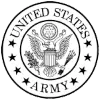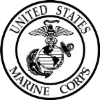Available 24/7
Professional Instruction
Free Training Materials






Course Details
The 20345-2: Designing and Deploying Microsoft Exchange Server 2016 - 2034B course is a 5-day course that is designed to teach experienced Exchange Server administrators with the knowledge to Designing and implementing an Exchange Server 2016 messaging environment.
The course will cover how to design and configure advanced components in an Exchange Server 2016 deployment including site resiliency, advanced security, compliance, archiving, and discovery solutions. Additionally, the course will cover topics like coexistence with other Exchange organizations or Exchange Online, and migration from previous versions of Exchange Server. Students will also learn guidelines, best practices, and considerations that will help them optimize their Exchange Server deployment.
Topics covered in the course include:
- Planing for Exchange Server deployments.
- Planning and deploying Exchange Server 2016 Mailbox services.
- Planning and deploying message transport.
- Planning and deploying client access.
- Designing and implementing high availability.
- Maintaining Exchange Server 2016.
- Designing messaging security.
- Designing and implementing message retention.
- Designing messaging compliance.
- Designing and implementing messaging coexistence.
- Upgrading to Exchange Server 2016.
- Planning a hybrid Exchange Server deployment.
Target Student:This course is designed for professionals in an enterprise environment who are responsible for designing and deploying Exchange Server 2016 solutions.
Students should possess the following experience before attending the course:
- A+ certification or equivalent knowledge
- Network+ certification or equivalent knowledge.
- Completed Course 2028A, Basic Administration of Microsoft Windows 2000, or have equivalent knowledge of administrative tasks
- Attended course 20345-1A: Administering Exchange Server 2016, or have equivalent knowledge.
- A minimum of 2-years experience using any version of Exchange Server.
- A minimum of 6-months experience using Exchange Server 2013 or Exchange Server 2016.
- A minimum of 2-years experience administering the Windows Server 2012 R2.
- A minimum of 2-years experience using Active Directory Domain Services (AD DS).
- A minimum of 2-years experience using name resolution, including Domain Name System (DNS).
- Experience using certificates, including public key infrastructure (PKI) certificates.
- Experience using Windows Powershell.
Section 1: Plan Exchange Server 2016 deployments
This section discusses the requirements and considerations for Plan an Exchange Server deployment.
Topics :
New features in Exchange Server 2016
Gathering business requirements for an Exchange Server 2016 deployment
Plan for an Exchange Server deployment
Design a Unified Messaging (UM) deployment
Lab : Plan Exchange Server 2016 deployments
Evaluating an existing messaging infrastructure
Identifying requirements
Discussion: Deployment design for Exchange Server 2016
Section 2: Plan and deploying Exchange Server 2016 Mailbox services
This section discusses how to plan and deploy Exchange Server hardware, virtualization, mailbox databases, and public folders.
Topics :
Plan Exchange Server hardware requirements
Plan Exchange Server for virtualization and Microsoft Azure integration
Plan and Implement public folders
Lab : Plan and Implement Exchange virtualization, mailbox databases, and public folders
Plan for virtualization
Plan for mailbox databases
Implement mailbox databases
Plan and Implement public folders
Section 3: Plan and deploying message transport
This section discusses how to plan and implement mail routing internally from and to the Internet, and transport-related tasks in the organization.
Topics :
Design message routing
Design transport services
Design the message-routing perimeter
Design and Implement transport compliance
Lab : Plan and deploying message transport
Plan for a redundant and secure message transport
Plan for transport compliance
Implement transport compliance
Section 4: Plan and deploying client access
This section discusses how to plan for client connectivity and client access in Exchange Server 2016. This section also describes how to implement Microsoft Office Online Server, and the coexistence of SharePoint 2016 with Exchange.
Topics :
Plan for Exchange Server 2016 clients
Plan for client access
Plan and Implement Office Online Server
Plan and Implement coexistence of SharePoint 2016 with Exchange
Design external client access
Lab : Plan and deploying client access solutions
Plan and configuring namespaces
Plan and configuring client access services options
Plan and deploying Office Online Server
Plan and Implement reverse proxy
Section 5: Design and Implement high availability
This section discusses how to design and implement a highly available solution for Exchange Server 2016.
Topics :
Plan high availability for Exchange Server 2016
Plan for load balancing
Plan for site resilience
Lab : Design and Implement site resiliency
Creating a lag database copy
Recovering data from a lagged database copy
Implement site resilience
Validating site resilience
Section 6: Maintaining Exchange Server 2016This section discusses how to maintain Exchange Server 2016 using Managed Availability and Desired State Configuration (DSC).
Topics :
Using Managed Availability to improve high availability
Implement DSC
Lab : Maintaining Exchange Server 2016
Using Windows PowerShell to investigate and configure Managed Availability
Implement DSC
Section 7: Design messaging security
This section discusses how to plan for messaging security and design and implement Active Directory Rights Management Services (AD RMS) and Azure RMS in an Exchange Server organization.
Topics :
Plan messaging security
Design and Implement AD RMS and Azure RMS integration
Lab : Design messaging security
Implement AD RMS
Integrating AD RMS with Exchange Server
Creating a message transport rule to protect email
Proteccting an email with AD RMS
Section 8: Design and Implement message retention
This section discusses how to plan for archiving and message retention.
Topics :
Overview of messaging records management and archiving
Design In-Place Archiving
Design and Implement message retention
Lab : Design and Implement message retention
Design message retention and archiving
Implement message retention and archiving
Section 9: Design messaging compliance
This section discusses how to plan for and implement several Exchange features to help minimize data loss and monitor email traffic and content.
Topics :
Design and Implement data loss prevention
Design and Implement In-Place Hold
Design and Implement In-Place eDiscovery
Lab : Design and Implement messaging compliance
Design messaging compliance
Implement data los prevention
Implement In-Place eDiscovery
Comparing messaging policy and compliance options
Section 10: Design and Implement messaging coexistence
This section discusses how to plan and implement federation, design coexistence between Exchange organizations, and design and move mailboxes between different forests and Exchange organizations.
Topics :
Design and implement federation
Design coexistence between Exchange organizations
Design and implement cross-forest mailbox moves
Lab : Implement messaging coexistence
Implement message-routing coexistence
Migrate user mailboxes
Section 11: Upgrading to Exchange Server 2016
This section discusses how to plan and implement an upgrade from previous Exchange Server 2013 or Exchange Server versions to Exchange Server 2016.
Topics :
Plan an upgrade from previous Exchange Server versions
Implement an upgrade from previous Exchange Server versions
Lab : Upgrade from Exchange Server 2013 to Exchange Server 2016
Documenting the Exchange Server 2013 organization
Deploy Exchange Server 2016
Upgrade from Exchange Server 2013 to Exchange Server 2016
Remove Exchange Server 2013
Section 12: Plan a hybrid Exchange Server deployment
This section discusses how to plan and implement a hybrid deployment for Exchange Server 2016.
Topics :
Basics of a hybrid deployment
Plan and Implement a hybrid deployment
Implement advanced functionality for hybrid deployments
Lab : Design the integration with Exchange Online
Design the integration with Exchange Online
Please check the course description to find prerequisite information.
MOC On-Demand: 20345-2-Designing and Deploying Microsoft Exchange Server 2016
On-Demand Training Course
90/month licence
- 24/7 Access
- Hands-On Practice Exercises
- Free Repeats
- Professional Instruction
Testimonials
This was the class I needed.
The instructor Jeff took his time and made sure we understood each topic before moving to the next. He answered all of our questions, and I don't know about the rest of the students, but was very pleased with this experience.
I finally understand how to use Excel.
-Amanda T (Yale New Haven Hospital).
Great class!
We were able to cover a lot of information in one day without getting overwhelmed.
-Maria R (Microsoft).
Free Repeats
Learn At Your Pace
No Travel
Professional Instruction
Affordable Pricing
Group Discounts

